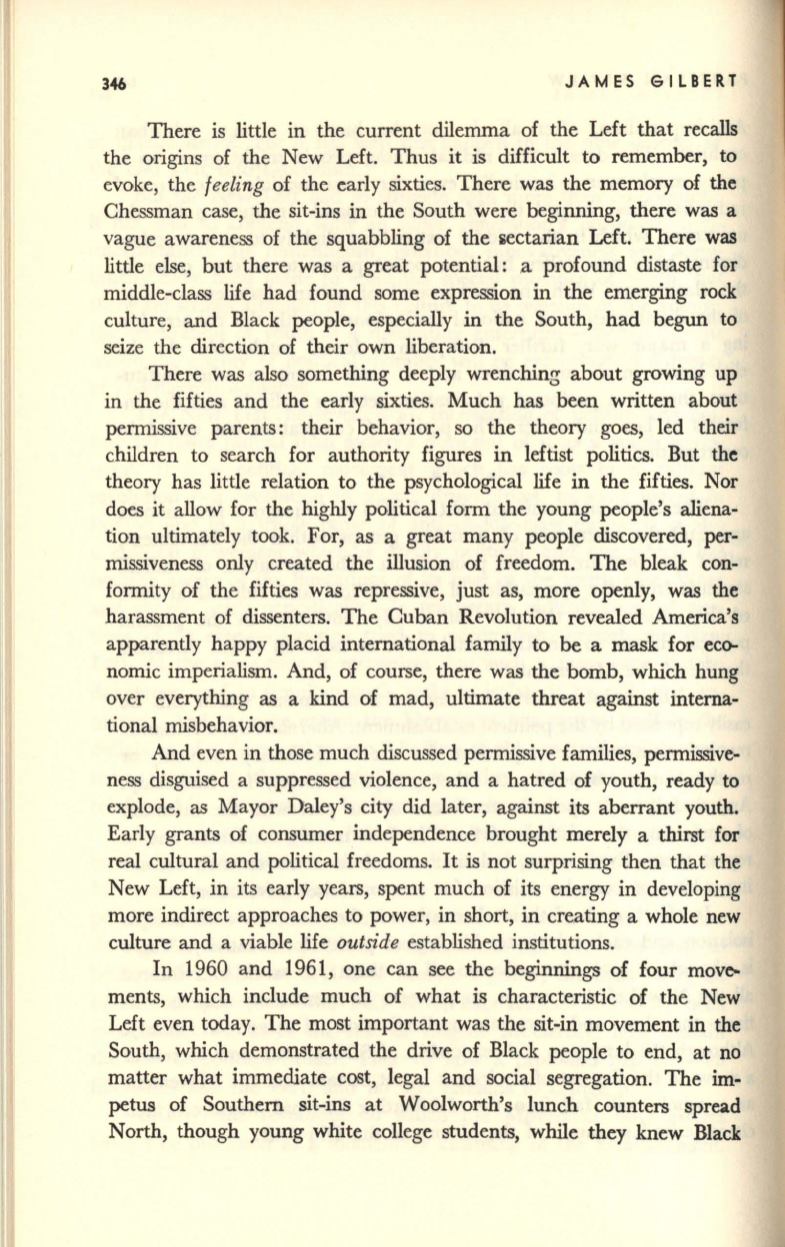
346
JAMES GILBERT
There is little in the current dilemma of the Left that recalls
the origins of the New Left. Thus it is difficult to remember, to
evoke, the
feeling
of the early sixties. There was the memory of the
Chessman case, the sit-ins in the South were beginning, there was a
vague awareness of the squabbling of the liectarian Left. There was
little else, but there was a great potential: a profound distaste for
middle-class life had found some expression in the emerging rock
culture, and Black people, especially in the South, had begun to
seize the direction of their own liberation.
There was also something deeply wrenching about growing up
in the fifties and the early sixties. Much has been written about
permissive parents: their behavior, so the theory goes, led their
children to search for authority figures in leftist politics. But the
theory has little relation to the psychological life in the fifties. Nor
does it allow for the highly political form the young people's aliena–
tion ultimately took. For, as a great many people discovered,
per–
missiveness only created the illusion of freedom. The bleak con–
formity of the fifties was repressive, just as, more openly, was the
harassment of dissenters. The Cuban Revolution revealed America's
apparently happy placid international family to be a mask for eco–
nomic imperialism. And, of course, there was the bomb, which hung
over everything as a kind of mad, ultimate threat against interna–
tional misbehavior.
And even in those much discussed permissive families, permissive–
ness disguised a suppressed violence, and a hatred of youth, ready to
explode, as Mayor Daley's city did later, against its aberrant youth.
Early grants of consumer independence brought merely a thirst for
real cultural and political freedoms.
It
is not surprising then that the
New Left, in its early years, spent much of its energy in developing
more indirect approaches to power, in short, in creating a whole new
culture and a viable life
outside
established institutions.
In 1960 and 1961, one can see the beginnings of four move-.
ments, which include much of what is characteristic of the New
Left even today. The most important was the sit-in movement in the
South, which demonstrated the drive of Black people to end, at no
matter what immediate cost, legal and social segregation. The
im–
petus of Southern sit-ins at Woolworth's lunch counters spread
North, though young white college students, while they knew Black


